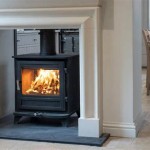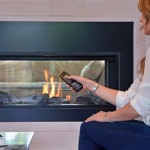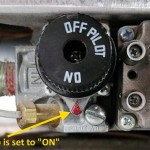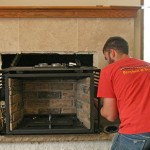```html
Energy Efficient Ventless Gas Fireplaces: A Comprehensive Overview
Ventless gas fireplaces, also known as vent-free gas fireplaces, offer a convenient and aesthetically pleasing heating solution for many homes. Their primary appeal lies in their ability to operate without the need for a traditional chimney or venting system, simplifying installation and providing flexibility in placement. However, understanding the energy efficiency and operational characteristics of these appliances is crucial for informed decision-making.
Ventless gas fireplaces function by burning natural gas or propane within a closed combustion chamber. They are designed to burn cleanly, minimizing the production of harmful byproducts like carbon monoxide. Manufacturers incorporate oxygen depletion sensors (ODS) that automatically shut off the gas supply if the oxygen level in the room drops to an unsafe level. This safety feature is paramount to their design and distinguishes them from older unvented gas appliances.
The efficiency of a ventless gas fireplace is typically measured by its Annual Fuel Utilization Efficiency (AFUE) rating. These fireplaces often boast AFUE ratings between 99% and 100%. This implies a high degree of fuel conversion into usable heat, minimizing energy waste. However, this rating does not fully encapsulate all energy-related considerations.
Understanding the Energy Efficiency Claim
The almost perfect AFUE rating often associated with ventless gas fireplaces stems from the fact that all of the heat produced by the combustion process is released directly into the room. Unlike vented fireplaces, no heat escapes through a chimney or flue. In a vented fireplace, a significant portion of the heat generated is lost to the outside environment, reducing overall efficiency. This inherent design difference results in the higher AFUE rating for ventless models.
However, the apparent high efficiency is not without caveats. While all the heat remains within the room, the combustion process also releases water vapor and small amounts of other gases, including carbon dioxide. These byproducts can contribute to increased humidity and, in poorly ventilated spaces, potentially impact indoor air quality. The human body perceives humidity as feeling warmer, so the thermostat setting may need to be lower to maintain the desired temperature. This factor, while indirect, plays a role in the overall energy consumption.
Furthermore, the heat output of a ventless gas fireplace may not be as consistently distributed as other heating systems. The area immediately surrounding the fireplace will experience the most significant temperature increase, potentially creating uneven heating patterns within the room. This localized heating characteristic might necessitate the use of supplementary heating or adjustments to existing central heating systems to achieve uniform temperature distribution throughout the entire house.
Impact on Indoor Air Quality and Ventilation
Proper ventilation is critical when operating a ventless gas fireplace. While the ODS system is designed to mitigate the risk of carbon monoxide buildup, ensuring adequate airflow helps to dissipate water vapor and other combustion byproducts. Many manufacturers recommend operating a window slightly ajar during use, particularly in smaller or tightly sealed rooms. The aim is to maintain a sufficient exchange of fresh air to prevent the accumulation of moisture and potentially harmful gases.
Inadequate ventilation can lead to condensation on windows and walls, potentially fostering mold growth. Moreover, individuals with respiratory sensitivities, such as asthma or allergies, may be more susceptible to the effects of even small concentrations of combustion byproducts. Careful monitoring of indoor humidity levels and regular air quality checks are advisable, especially when using ventless gas fireplaces frequently.
Consider the type of indoor air quality monitoring and ventilation practices that are common for cooking with a gas stove. Ventless gas fireplaces require similar diligence. The EPA recommends proper ventilation and to ensure that the appliance is properly sized for the space it will be heating. While the fireplace may effectively heat the room, the amount of byproducts produced increases with larger fireplaces, necessitating more ventilation.
Sizing and Placement Considerations
Selecting the appropriate size of ventless gas fireplace for the intended space is crucial for both energy efficiency and comfort. An oversized unit may produce excessive heat, leading to discomfort and energy waste. Conversely, an undersized unit may struggle to adequately heat the room, negating its intended purpose.
Manufacturers typically specify the heating capacity of their fireplaces in British Thermal Units (BTUs). A BTU is a unit of energy that measures the amount of heat required to raise the temperature of one pound of water by one degree Fahrenheit. Determining the appropriate BTU rating for a room involves considering factors such as the room's size, insulation levels, window area, and climate. Consulting with a qualified HVAC professional or energy auditor can provide valuable insights and ensure that the selected fireplace is appropriately sized for the specific application.
Placement also plays a role in maximizing the efficiency and effectiveness of a ventless gas fireplace. Locating the fireplace in a central area of the room can help to distribute heat more evenly. Avoiding placement near doorways or windows, where significant heat loss can occur, is also advisable. Consider factors such as furniture placement and airflow patterns to optimize heat distribution and minimize drafts. The installation of a ceiling fan can assist in circulating warm air downwards, improving overall comfort and reducing temperature stratification.
Proper installation and maintenance are also keys to safety and efficient operation. The fireplace must be installed in accordance with manufacturer’s instructions and local codes. Regular inspections and cleaning can help to ensure that the appliance is functioning optimally and safely.
```:max_bytes(150000):strip_icc()/ventless-gas-fireplaces-4160746-hero-f9d4bdcd9bd446eb84406de306f790ba.jpg?strip=all)
How To Pick Out A Ventless Gas Fireplace

Vented Vs Ventless Gas Fireplace Logs

Is An Unvented Gas Fireplace More Efficient Than A Condensing Furnace Energy Vanguard

Duluth Forge Dual Fuel Ventless Gas Fireplace 26 000 Btu Remote Control Auburn Cherry Finish 170106 The Home Depot

Duluth Forge Dual Fuel Ventless Gas Fireplace With Mantel 32 000 Btu Buyersdepot Com

White Mountain Hearth Vfpa32bp Vail Ventless Premium Fireplace With Slope Glaze Burner And Log Set 32

Gas Fireplace Inserts Pros And Cons Of Ventless Fireplaces

Duluth Forge Full Size Dual Fuel Ventless Gas Fireplace With Mantel Buyersdepot Com

What Is A Ventless Gas Fireplace Experts In Gaithersbutg Md

Duluth Forge Dual Fuel Ventless Gas Fireplace 32 000 Btu T Stat Control Auburn Cherry Finish 170124 The Home Depot








